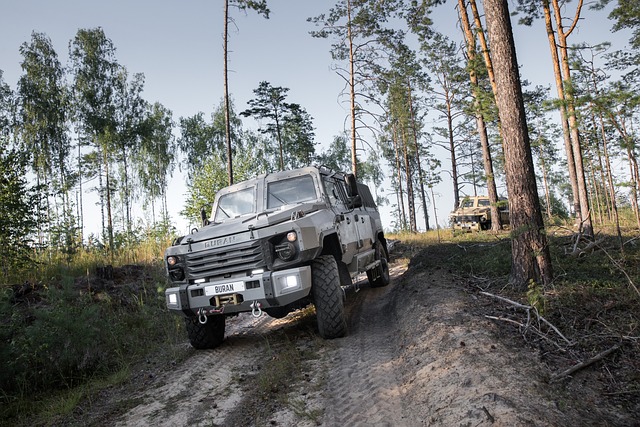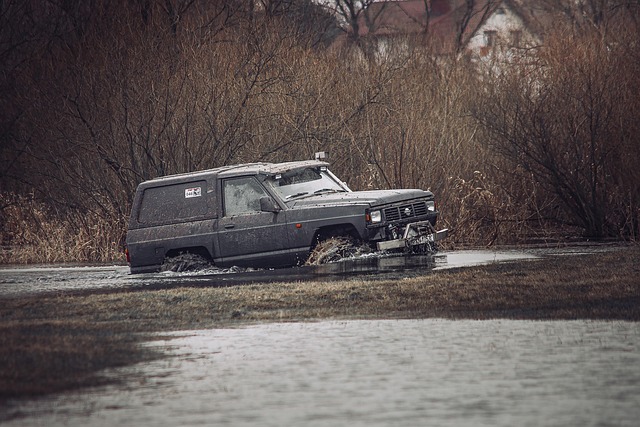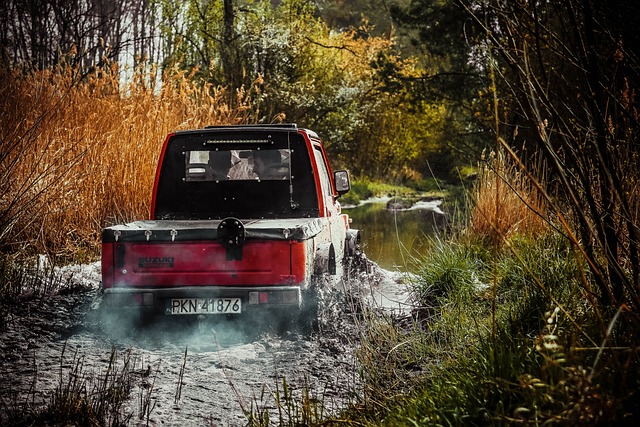Hitch balls are crucial components for overlanders and off-road enthusiasts, enabling secure towing of extra equipment like trailers or caravans. Overland 4×4 parts specialists offer a range catering to various vehicle types and towing capacities. With rigorous testing for durability and compatibility, these balls enhance 4×4 vehicles' versatility. Choosing the right hitch ball for an RGV involves matching shank length, diameter, towing capacity, and material strength. Proper installation, maintenance, and safety practices are essential for reliable performance during off-road adventures.
“Unleash your adventurous spirit with hitch balls—essential components for overland 4×4 enthusiasts. This comprehensive guide explores the fundamentals of hitch balls, highlighting their pivotal role in equipping recreational vehicles (RGVs) for off-road prowess.
We’ll delve into the differences between various hitch ball types, perfect for navigating rugged terrains. Learn how to select the ideal hitch ball for your RGV, ensuring a secure connection during your next epic journey. Additionally, discover installation, maintenance, and safety tips to make every trip worry-free.”
- Understanding Hitch Balls: A Basic Overview
- The Role of Hitch Balls in Overland 4×4 Vehicles
- Choosing the Right Hitch Ball for Your RGV (Recreational Vehicle)
- Installation, Maintenance, and Safety Tips for Hitch Balls
Understanding Hitch Balls: A Basic Overview

Hitch balls are an essential accessory for any serious off-roader or enthusiast of overlanding and 4×4 adventures. These simple yet versatile devices serve as a secure attachment point for towing additional equipment, such as trailers, caravans, or even bikes, allowing for increased versatility and functionality during outdoor excursions. In the context of overland travel, where rugged terrains are commonplace, hitch balls become indispensable tools, offering a reliable way to transport extra gear without compromising on vehicle stability.
The RGV (recreational vehicle) community heavily relies on these components, often customising them to fit their specific needs. Overland 4×4 parts specialists provide a wide range of hitch balls catering to various vehicle types and towing capacities, ensuring that every adventurer can find the perfect match for their setup. With different sizes, ball material options (like steel or brass), and security features like locking mechanisms, choosing the right hitch ball is key to ensuring safe and efficient overland travel.
The Role of Hitch Balls in Overland 4×4 Vehicles

In the world of overland 4×4 vehicles, hitch balls play a pivotal role in expanding the capabilities and versatility of these rugged machines. These simple yet effective components are integral to the setup of tow hitches, allowing owners to transport various accessories and cargo securely behind their off-road vehicles. Whether it’s a camp trailer, a storage container, or even a specialized 4×4 recovery vehicle, hitch balls provide a robust connection point, enabling adventurers to conquer diverse terrains with enhanced towing capabilities.
Hitch balls, as part of the broader category of overland 4×4 parts (4×4-parts-rpg), are subject to rigorous testing to ensure they can withstand the extreme conditions often encountered during off-road excursions. Their design considerations include strength, weight capacity, and compatibility with standard trailer hitch systems, ensuring a seamless integration that enhances the overall performance and safety of the 4×4 vehicle.
Choosing the Right Hitch Ball for Your RGV (Recreational Vehicle)

When selecting a hitch ball for your RGV, it’s crucial to consider its compatibility with your vehicle and intended use. Overlanding enthusiasts often require robust components that can handle rugged terrain and heavy loads. The right hitch ball should match your RGV’s towing capacity and be made from high-quality materials like steel or aluminum alloy, ensuring durability during off-road adventures.
For overland 4×4-parts-RGV owners, choosing a hitch ball with a suitable shank length and diameter is essential. Different vehicles have varying ball mounting points, so measuring your RGV’s existing hitch setup is vital. Additionally, consider the weight rating to ensure it accommodates the additional gear and passengers you plan to tow securely across diverse landscapes.
Installation, Maintenance, and Safety Tips for Hitch Balls

Installation, Maintenance, and Safety Tips for Hitch Balls
When installing a hitch ball on your vehicle, be sure to follow the manufacturer’s guidelines closely. This involves selecting the correct size and weight rating for your specific vehicle and towing needs. Proper installation includes securing the hitch ball firmly in place using the provided hardware and tightening it to the recommended torque specifications. For overland 4×4 enthusiasts, choosing robust hitch balls designed for off-road use is essential to ensure durability during challenging terrain navigation.
Regular maintenance plays a vital role in keeping your hitch ball reliable. This includes periodically inspecting the ball and its mounting hardware for signs of wear or damage. Tighten connections as needed to maintain a secure fit. For overland 4×4-parts-rpg users, considering weatherproof coatings or covers can protect against rust and corrosion, enhancing longevity. Always follow safety best practices when towing, such as ensuring proper weight distribution, using stabilizers if necessary, and adhering to legal towing limits to prevent accidents and maintain control while on the road.
Hitch balls are an essential component for those exploring off-road adventures with their overland 4×4 vehicles and RGVs. Understanding their purpose, choosing the right fit, and maintaining proper safety protocols are key to ensuring a seamless and secure towing experience. By equipping your vehicle with the appropriate hitch ball, you’ll be well-prepared to tackle diverse terrains, allowing for an enhanced exploration of nature’s wonders while keeping your journey safe and reliable.
